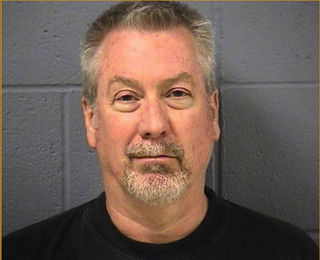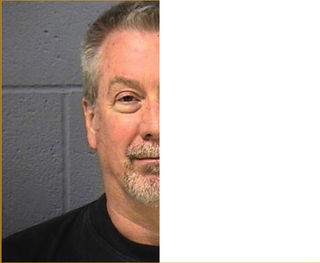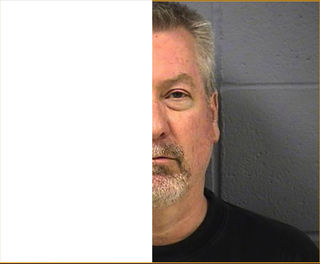Fear
Chirality: A Look at Emotional Asymmetry of the Face
When the face reveals two emotions at the same time.
Posted May 21, 2016 Reviewed by Jessica Schrader
We are often confronted with a facial expression that makes us feel uncomfortable or we sense there is something wrong. Most of us don’t go further than saying, “That just doesn’t seem right,” or, “Something is odd about that face,” without really knowing what it was that made us sense something was off. Sometimes these facial expressions flash before us so quickly that we can’t really explain what we saw, but our subconscious tells us something is wrong.
We have long understood that the human face is very much asymmetrical when resting. We know this because when we take one half of the face, replicate it as a mirror image, and match it up side-by-side, we look odd as this link shows us. One side of the face makes our nose and neck look thinner while the other makes our neck look wider. Our faces are naturally asymmetrical; but this is not what this post is about. This post is about how the face at times can betray our true sentiments because each side of the face, the right or the left, is reflecting a different emotion. Let me explain.
When we smile, a genuine happy smile, there will be symmetry of emotion on the face even though our faces are not in and of themselves symmetrical. So even though both sides are slightly different, true emotions will be seen equally across both sides of the face—in essence, emotional symmetry. In other words when we are either truly angry or truly happy, both side of the face reflect that emotion.
However, oftentimes, when we are experiencing multiple emotions at the same time or when there is an attempt to hide an emotion, we are betrayed by the emotional asymmetry of the face—what I call facial chirality (pronounced ki ra li ti). Chirality is a term that comes to us from the Greek language and is used to describe two objects that may appear identical but when folded over onto themselves they are not symmetrical.
Animosity, anger, fear, as well as other emotions, appear freely on both sides of the face as we truly experience them. However, when there is suppression of these emotions, when there is an attempt to beguile others as to how we really feel, or there are hidden issues or feelings, oftentimes, we see that emotion displayed only on one side of the face and not the other. The fact that we are seeing a chiral emotional display should serve as a warning that something is wrong.
A chiral display is often perceived subconsciously and lets us know something is odd. When we see facial chirality as a result of multiple emotions, this lack of symmetry should make us more alert as to what is the cause for this behavior. Is there a substantive issue that is in conflict or is being suppressed?
Chiral displays are not indicative of deception, and must not be taken that way, even though they do reveal multiple emotions. The question is why? I have seen these displays many times, for instance, when an abusive husband is led away in handcuffs and the spouse shows both relief and fear at the same time—each side of the face representing a different emotion. I have also seen it where someone is verbally apologizing for something they did and one half of the face looks contrite while the other side looks like they are getting away with something.
Here is an example of an individual named Jesus Oliveira who posted on social media his innocence on the charge of abuse. As he declares his innocence, note how one half of the face looks different than the other half. As my students say, “One half looks like he is begging to be believed and the other he looks scared.” By covering one side of the face at the midline you will see the two behaviors more clearly. The question is why? Why are we seeing this facial asymmetry? What is the cause?
Here is another example. Drew Peterson was arrested for the disappearance of his ex-wife Kathleen Savio (wife #3) and was later convicted. At the time of his arrest, this is how he looked in his booking photograph. Keep in mind that Peterson had taunted that same police department when allegations against him were made that he had something to do with the disappearance of his fourth wife, Stacy Ann Cales Peterson and was recently convicted of conspiring in a murder-for-hire scheme.

Look closely at the photo. I have shown this photograph in 17 different countries from Taiwan to Romania. Most people sense something but they are not quite sure what it is. Some people think nothing is out of place, but many people say something fishy is going on. It is not until we cover up one half of the face and examine the exposed half closely that we realize each side of the face is sending a different message or displaying a different emotion.

When we cover up the left side of his face the right side displays what some people claim is contempt, a sneer, arrogance, or haughtiness. It may also be “narcissistic glee,”—something I have seen many times from the pathologically narcissistic and psychopaths (Dangerous Personalities, Rodale).

When we cover the right side of his face, exposing the left side, we see something much different. Some describe it as a cold stare, a predatory look, or a look of hatred; I see reptilian indifference, the kind I have seen before from social predators that says, “You are nothing to me.” Others see suppressed anger.
As we look at each side independently and then compare to the whole face, we see the contrast and how when we look at the complete picture it can be beguilingly misleading. There is more there than we first assumed.
The point of this is simply that the subconscious mind is picking up on these behaviors even if we consciously are not. If we can identify more precisely what it is that we are seeing, it may give us insight as to why there is a lack of concordance in the emotions displayed. Is it because of suppressed feelings or emotions, unresolved issues, irritability, an emotionally unstable personality, an attempt at perception management, attempted deception, or true sentiments (such as anger) that may put us at risk.
I have presented but two examples. Like these, I have collected many over the years. It is my hope that others will also look for these asymmetrical displays of emotions, will validate their existence, and do additional research as to their prevalence.
Chirality of the face is one more thing that can help us determine true emotions, feelings, or thoughts. As Gavin De Becker described in his book The Gift of Fear, which I highly recommend, our limbic system is exquisitely sensing the world for us, picking up on nuance. But how much better it is when we can more precisely identify specific clues that shout to us something is not right, something is amiss, there are issues here. In almost every circumstance, this can be very useful.
Joe Navarro, M.A. is a 25-year veteran of the FBI and is the author of What Every Body is Saying, as well as Louder Than Words and Dangerous Personalities; visit www.jnforensics.com for more information or follow Joe on Facebook.
Copyright © 2016, Joe Navarro. Edited with the assistance of Janice Hillary.




